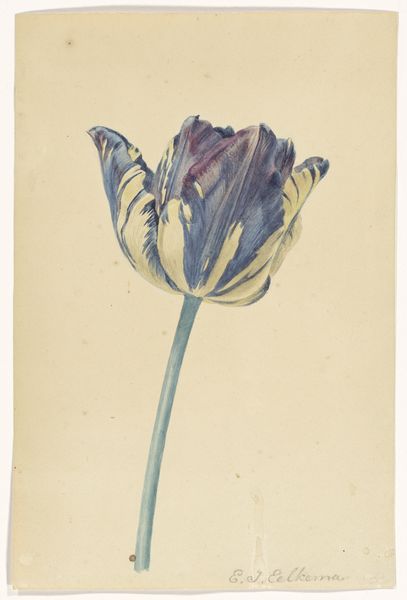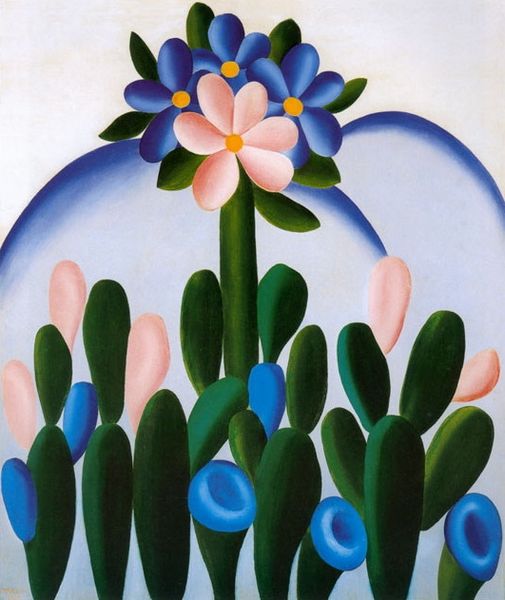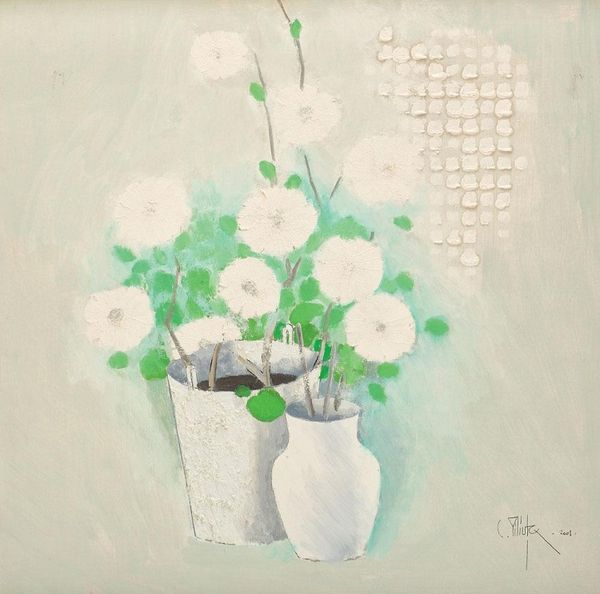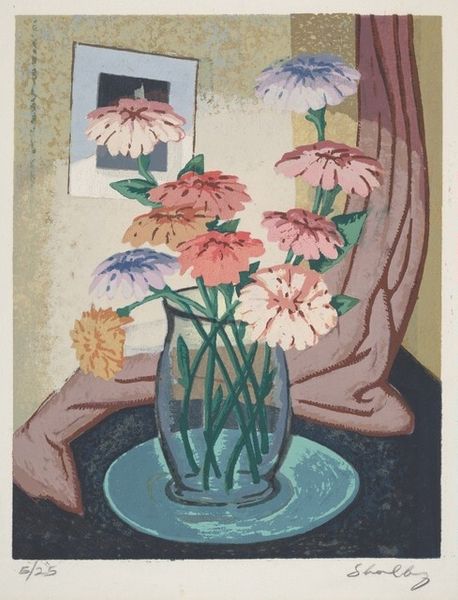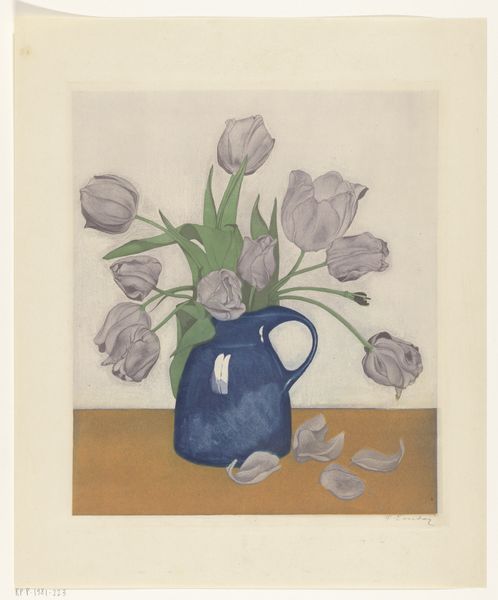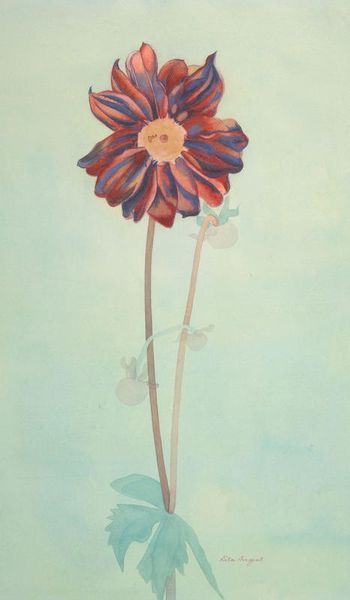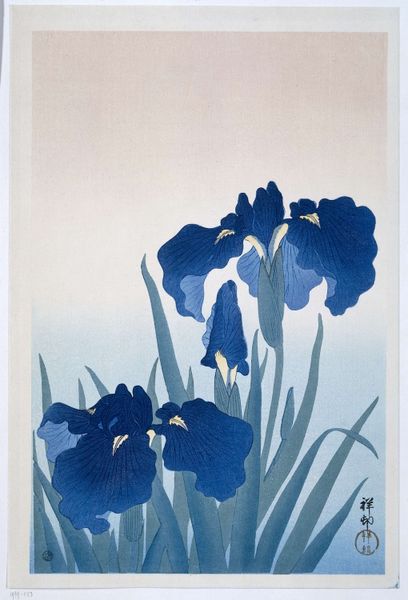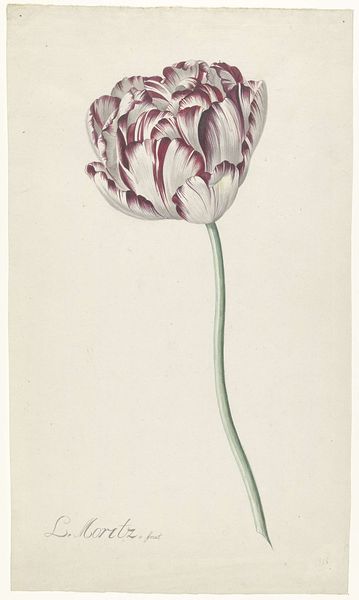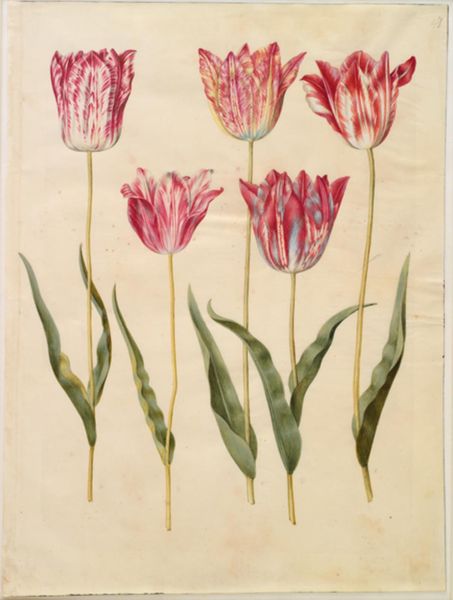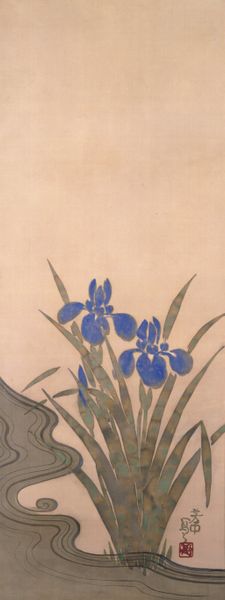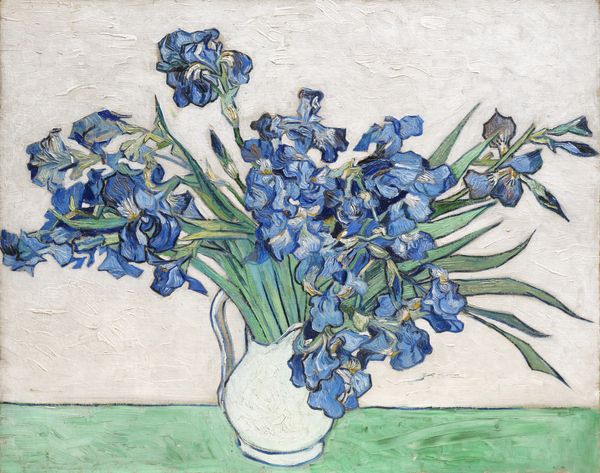
plein-air, photography, watercolor
#
portrait
#
still-life
#
impressionism
#
arts-&-crafts-movement
#
plein-air
#
glasgow-school
#
photography
#
oil painting
#
watercolor
#
geometric
#
line
#
watercolour illustration
#
watercolor
Copyright: Public domain
Curator: Immediately, I see fragility and light. The pale blues and greens give this watercolour, "White Tulips", such an ethereal quality. Editor: Right. Here, Mackintosh, associated with the Arts and Crafts movement, presents us with an exercise in the aesthetic possibilities inherent in flower painting. We see how this piece engages in production beyond purely visual interest. How can the artistic expression connect us with materials and production, say, of paper, paints or with growing of plants and flowers and distribution of the art? Curator: You're already thinking of its physical production. I'm caught by the formal elements: the upward thrust of the tulips against the geometric regularity of the tabletop. The contrast is striking. The translucence achieved through the medium… It's beautiful. Editor: Beautiful, yes, but how does Mackintosh challenge the established hierarchy? Is he critiquing mass production while participating in the marketplace with his artistic labor? Does this piece show a class aspiration reflected in the imagery? Curator: Perhaps. But look at the balance he achieves. The placement of the second, smaller vase; how it complements but doesn't overwhelm the primary subject. Notice the use of negative space. It breathes. It guides your eye through the composition so efficiently. Editor: I agree that it seems balanced formally, but, equally important to me is to question who were consuming images like this? How would someone viewing the art feel empowered or disempowered by these choices? Is it an image of bourgeois leisure, a display of privilege obtained by those who could afford his works and style of life? Curator: You always bring it back to social context, don't you? It could be a statement, of course, or simply, genuinely a display of aesthetic skill. There’s just no mistaking the delicate skill. It resonates emotionally, and it also creates a lasting memory in a visual world. Editor: Precisely, but those emotions are themselves formed by economic conditions in culture! So considering context is paramount to any honest art interpretation. What do you make of that small hint of red at the very top? Curator: Oh! That tiny blush on one of the tulips... That single touch enlivens the entire painting. A little dab, an imperfect watercolor, makes perfect sense for the viewer to create interest and pull to observe and contemplate. Editor: A reminder then, that even the most seemingly innocent images are embedded in socio-economic circumstances. The more art helps us see these interconnections and relations, the richer the artistic understanding becomes.
Comments
No comments
Be the first to comment and join the conversation on the ultimate creative platform.
